The Jedi Council requested a daunting task of Jedi Master Gnost-Dural, keeper of the Jedi archives: to revise the order’s historical records about the formation of the Sith Empire. These detailed holorecords are his trouble findings about the Fallen Jedi during the Great Hyperspace War to the more recent Jedi Civil War. His holorecordings have been translated in to a readable format for future archivists.
These holorecords were originally available on SWTOR.com‘s holonet before the launch of Star Wars: The Old Republic.

I also have every one of the images from this series as a screenshot 1920×1080 background on a different page!
![]()
Contents
- The Treaty of Coruscant
- The Mandalorian Blockade is Broken
- The Return of the Mandalorians
- The Empire Changes Strategy
- The Battle of Bothawui
- Onslaught of the Sith Empire
- Peace for the Republic?
- The Jedi Civil War
- The Mandalorian Wars
- The Exar Kun War
- Rebirth of the Sith Empire
- The Great Hyperspace War
- Unfinished Entries
The Treaty of Coruscant

Greetings. I am Master Gnost-Dural, keeper of the Jedi archives.
The Jedi Council requests I perform a daunting task – to revise the order’s historical records in light of new revelations about the formation of the Sith Empire.
Specifically I am to trace the conflict between the Empire and the Republic, the Sith and the Jedi, to uncover the roots of the struggle which now plagues us.
I’ve chosen to begin with the singular defining event of recent years – the unprecedented peace agreement between the Sith Empire and the galactic Republic – the treaty of Coruscant.
Three centuries after the death of Darth Malak and the end of the Jedi Civil War, the true Sith Empire returned from deep space, attacking the Republic. They began a war unlike any other in the galaxy’s history.
The great galactic war dragged on for decades. Thousands of Jedi and Sith were slain, countless star systems were ravaged.
Though he now controlled half the galaxy, the Sith Emperor grew impatient – he had expected his triumph to come quickly.
The lords of the Emperor’s Dark Council surprised the Republic senate with an offer of peace – a reprieve the Republic could not afford to ignore.
Matters had become complicated for the Republic war effort since the critical trade route between the outer rim and the core worlds was recovering from the Mandalorian blockade.
The Jedi Council urged caution as the senate to considered the Sith’s offer, but even they had to agree – the war was unwinnable – peace was the only hope.
Republic and Imperial diplomats convened on the planet of Alderaan to discuss a galaxy-wide cease-fire…
But the Sith still had one play to make.
The Imperial fleet launched a surprise assault on the Republic capital of Coruscant. Bombarding the planet from orbit and storming the city-world’s bottomless towers.
With Coruscant’s defenses incapacitated, the Imperials annihilated the Jedi temple, captured the senate tower, and held the entire planet hostage.
Back on Alderaan, Republic diplomats had no choice. Despite unfavorable terms, the treaty of Coruscant was signed.
Jedi and Republic troops began withdrawing from battlefields around the galaxy, leaving star systems to fend for themselves and to be quickly swallowed up by the Sith Empire.
The Jedi returned to Coruscant to find their temple in ruins and irate senators blaming the Jedi for all the Republic’s troubles.
Though still committed to defending the Republic, the Jedi relocated to their ancient homeworld of Tython – to rest, meditate, and seek guidance from the force.
Thus began the unprecedented stalemate – the Jedi reconnecting with their roots, the Republic nursing its wounds, the Sith consolidating their power, and a galaxy divided between darkness and light.
In retrospect, this outcome was inevitable, and would have come sooner were it not for some of the Republic’s less savory allies. I will elaborate on this theory soon.
![]()
The Mandalorian Blockade is Broken

After the Sacking of Coruscant, the Jedi Council agreed that the Republic had been undone by the bold cunning of the Empire’s strategy.
A closer look, however, suggests the Sacking of Coruscant was not the crowning moment of the Empire’s campaign, but rather a risky maneuver undertaken after all other efforts had failed. The Sith only considered turning to such measures after their efforts were undermined by an unlikely Republic ally – the criminal smuggling contingent that broke the Mandalorian blockade.
The blockade choked the primary trade route for providing Republic military support to the outer rim… and the main hyperlane for bringing raw goods from the colonies to the core worlds.
Long-standing holdouts in the outer rim began folding to the Empire, and critical supplies vanished from the core worlds almost overnight. As starvation swept through the lower levels of Coruscant, riots broke out planetwide. Talk in the senate veered sharply toward a complete surrender to the Sith Empire. It was at this critical hour that a Mirialan smuggler named Hylo Visz recognized an extraordinary business opportunity for her and her partners.
With the Republic willing to pay any price for raw goods, Hylo’s plan was simple – break the Mandalorian blockade.
Loading massive freighters with all the goods the outer rim had to offer, Hylo and her fellow smugglers hauled their loads to within a parsec of the blockade and stopped still.
Distracted by suspicious freighters, the Mandalorians never knew what hit them – a motley fleet of small starships dropped out of hyperspace and opened fire.
A massive space battle ensued. The smugglers’ light fighters ran rings around the Mandalorian cruisers – but even so, Hylo Visz and her band were outmatched.
Fortunately, Republic strategic information systems was tipped off and starfighters were scrambled from nearby systems. With their assistance, the Mandalorians were quickly overcome.
The blockade broken, Hylo Visz brought freighters full of raw goods into Coruscant and walked away with more wealth than she had ever imagined. An elaborate medal ceremony was held in her honor, but Hylo never showed – she was long gone.
Rumor has it Hylo Visz was killed a year later for double-crossing the Hutts. Regardless, through this unlikely hero’s efforts, the Republic war effort gained a reprieve.
At the time, many believed the Empire was behind the Mandalorian blockade. My research indicates a far more elaborate explanation. I will share that in my next report.
![]()
The Return of the Mandalorians

Mandalorians.
Trained from birth to fight in battle, their bodies are honed into killing machines.
These independent warrior-nomads have challenged the Jedi for centuries.
The Mandalorians embrace conflict and admire strength. But they are different from our dark counterparts. They are not like the Sith.
Mandalorians believe confrontation is required for growth – on the personal, as well as the cultural level.
War is the Mandalorians’ way of life. Combined with their thirst for conquest, it makes them undeniably dangerous.
However, we must acknowledge that their commitment to self-improvement is not unlike our own…
And there is even something respectable about their rugged sense of honor.
But they are not our friends.
The Mandalorians’ allegiance to our enemies has cost us dearly.
After the Sith Empire’s initial onslaught, star systems continued to fall, until the Jedi finally managed to stop the enemies’ advance in the mid rim.
For the first time in decades, the Republic senate breathed a sigh of relief.
But it was short-lived.
In the arenas of Geonosis – a young gladiator had risen to prominence, calling himself the new ‘Mandalore’ – a title unclaimed for centuries – a title reserved for the greatest warrior in the galaxy – a warrior worthy to lead the Mandalorians.
Though it had been centuries, the descendants of the once-proud culture had not forgotten the legends of the Mandalores who had gone before.
Spread far and wide, working as mercenaries and bounty hunters, when the new Mandalore called, his loyal subjects came.
Mandalore’s call was simple – to confront the galaxy’s greatest challenge and fight the legendary Knights of the Jedi order.
Amassing an army overnight, Mandalore planted his forces in the path of the Hydian way trade route – cutting off the Republic’s most critical supply lines.
We were initially hesitant to pull back from the battle with the Sith in the outer rim – but after several pleas from the senate, the supply crisis could not be ignored.
The Jedi order answered the new Mandalore’s challenge – we attacked the blockade.
Our order was defeated quite profoundly…
The Mandalorian blockade held strong until the day intrepid smugglers took their shot at the Mandalorians, and managed to rescue the Republic.
Mandalore went on to lead many of his followers to seek new challenges while others again struck out on their own.
The true enigma in the resurgence of the Mandalorians was the rise of the new Mandalore himself.
I will endeavor to find clues to this enigma for my next report.
![]()
The Empire Changes Strategy

The arrival of Imperial allies into the great war was a devastating blow from which the Republic never fully recovered.
This was the second step in the Sith Emperor’s Master plan.
Recent Republic strategic information reports proved that the rise of the Mandalorians was orchestrated by Imperial intelligence.
We know extremely little about this shadowy organization but Imperial intelligence operatives are clearly just as deadly as their Sith superiors.
The galaxy’s criminal networks wavered endlessly during the great war, debating whether to back the Republic or the Empire.
Although the Hutt cartels resented the Sith Emperor for not including them in his pre-war conspiracy, Imperial intelligence somehow blocked the Republic’s efforts to win the hutts’ support.
Scattered around the galaxy, Mandalorian mercenaries and bounty hunters faced the same choice as the Hutts. Some signed on with the Empire but most remained independent.
Imperial diplomats made repeated attempts to recruit the galaxy’s most infamous bounty hunters but were turned down every time.
The Empire shifted its tactics.
Mandalorian mercenaries and bounty hunters often fought as gladiators for money and glory – a mark of honor in Mandalorian culture.
Imperial agents used this to their advantage, infiltrating the most prominent gladiatorial arenas in the galaxy as managers, as sponsors, and even in some cases as gladiators themselves.
The Imperial agents singled out a proud young gladiator to be their pawn.
This young gladiator had always fared well in the arena, but with his new Imperial allies, his rise was accelerated to unprecedented levels.
Rigging arena fights is not unheard of but Imperial agents brazenly sabotaged the entire system and drugged their champion’s competition. None could stand against him.
The whispers of Imperial agents became cheers in the arena… “Mandalore! Mandalore!” the ancient title of the ultimate warrior king was thrust upon the young gladiator. His infamy grew, and when he called, the Mandalorians rallied to their new Master.
The new Mandalore secretly served Masters of his own, however.
Imperial agents pulled their puppet’s strings, and the Mandalorian army blockaded the Hydian way and challenged the Jedi.
Though the blockade was eventually broken, the stage was set for the Sacking of Coruscant and the uneasy truce which now paralyzes the Republic.
The Mandalorian-Sith alliance remains intact to this day. That could change if the original ruse were brought to light, but the Imperial intelligence covers its tracks too well.
Mandalore was slain recently, and his killer, the new Mandalore, has taken his place. Whether or not he’s an Imperial puppet remains to be seen, but we must watch him closely.
Imperial agents’ success in bringing the Mandalorians into the war was the counter-play to the Republic’s first string of victories; the subject of my next report.
![]()
The Battle of Bothawui

When the Emperor planned the Republic’s destruction, he did not foresee the need for alliances.
The Sith would sweep through the galaxy, systematically exterminating their age-old Jedi enemies and dismantling the proud Republic.
But the Emperor’s vision was cynical.
He did not count on the brave sacrifices the Republic’s heroes were willing to make.
After the Sith offensive seized the Seswenna sector of the outer rim, the Imperial armada turned its sights closer to the core. The mid rim.
Believing the Republic was still recovering from its heavy losses, Imperial forces charged into Bothan space, where they were caught off guard by the full force of the Republic fleet.
The Republic fleet obliterated the Imperial squadron and the battle of Bothawui became the Republic’s first major victory in the war.
The news spread across the galaxy, rekindling lost hopes and re-energizing exhausted defenders.
The Republic fleet moved on, but a courageous force of Jedi and Republic soldiers remained on Bothawui to await the Empire’s return.
The vengeance of the Sith came swiftly.
Imperial battle cruisers from around the galaxy closed in on Bothan space to recoup their losses.
A high-powered planetary shield protected Bothawui from bombardment, forcing the Imperial forces to engage on the ground.
Jedi Master Belth Allusis, seven dozen of the order’s finest Knights, and four thousand of the Republic’s strongest soldiers dug in to defend the shield generators… or die trying.
The disparity was staggering.
An unprecedented Imperial army, fifty thousand strong, descended on Bothawui’s brave defenders.
The defenders were undaunted.
With no expectations of survival, they were mindful only of their duty.
But overconfident Imperial commanders threw all their armies’ might into the direct assault and their ground forces fell in droves.
For every Republic soldier who died, ten Imperials were killed.
The Empire was forced to call in reinforcements.
Despite the defenders’ determination, their lines were whittled away until only a handful of soldiers and Jedi remained.
They rallied to Jedi Master Allusis for a final stand.
Imperial Grand Moff Zellos offered to spare Master Allusis if he and his brave comrades would surrender.
Neither pride nor foolhardiness drove the defender’s decision.
They were guided by the force.
They had passed beyond the fear of death.
Their glorious last stand will never be forgotten.
Allusis and his men fell, but not before the Imperials were driven to retreat.
The battle of Bothawui was a draw.
The heroes of Bothawui inspired bold new Republic strategies that eventually halted the Empire’s advances.
In retrospect, though, the Republic lost too many systems in the early years of the great war.
The execution of the Emperor’s brilliant strategy was flawless.
Survival was the best the Republic could hope for.
I have spent much time now piecing together the puzzle of the Emperor’s initial designs, and I have a theory that is quite surprising.
I’ll develop that for my next report.
![]()
Onslaught of the Sith Empire

The onslaught of the Sith Empire was an event unlike any other in the history of the Republic.
The Sith materialized from nowhere and launched an offensive of colossal proportions.
Horrifying reports from the outer rim seemed to portend the utter destruction of the Republic.
The rapid onset of galaxy-wide terror and panic was part of the Sith Emperor’s meticulous calculations. His plan was flawless.
Sith battle cruisers first appeared on the fringes of the Tingel Arm.
Unaware of the ships’ origins, we dispatched a diplomatic convoy with a small starfighter escort. The Emperor wanted us to witness the full might of his forces before he attacked.
The diplomats had just enough time to transmit images back.
Then they were annihilated.
Immediately thereafter, the Sith began a full assault on the Republic allies in the Aparo sector which fell before the Republic fleet even arrived.
Then our allies turned on us.
The Sith had secretly established puppet governments on Belkadan, Sernpidal, and Ruuria.
The Republic fleet suddenly found itself in enemy territory, fighting desperately on all sides.
The Republic rallied every available ship to support the fleet, leaving only a handful of Jedi security ships to patrol Korriban.
Regrettably, Korriban fell back into the enemies’ hands without the Jedi Council even knowing about it.
Overwhelmed and desperate, the Republic fleet scattered, fleeing from the Tingel Arm to avoid complete annihilation.
Elsewhere in the outer rim, the Sith staged more targeted strikes, destroying our shipyards in the Sluis sector, blockading the Rimma trade route, and seizing control of the rich resources in the Minos cluster.
Confused and in complete disarray, Republic forces were unable to respond. Republic leaders and members of the Jedi Council arranged an emergency meeting in the senate to prioritize the galaxy’s defense, but the session quickly became mired in politics.
Irate senators stormed out in protest over decisions which left their representative sectors exposed to attack.
Many of the Republic’s diplomatic allies refused to commit their military support to the greater cause.
It was every system for itself.
This was perhaps the greatest genius of the Emperor’s plot.
He had turned the Republic against itself.
While the Republic played politics, the Emperor used this time to reconfigure his forces for the long push into the galactic core.
All might have been lost in those early years had individual Jedi Masters and Republic military leaders waited for the senate’s orders.
By taking matters into their own hands, they managed to slow the Empire’s advances.
The attack of the Sith Empire was the most well-orchestrated and carefully coordinated military maneuver in the galaxy’s history. Indications suggest the operation took centuries of planning and preparation.
I’ll elaborate in my next report.
![]()
Peace for the Republic?

The centuries preceding the great war were a time of peace and growth for the Republic. Dozens of new star systems joined the galactic senate.
For the Sith Empire, however, these centuries were marked by a rapid acceleration in the preparations for war – an effort in which the Sith showed surprising cooperation and sacrifice.
I have long suspected that during this extended period, the Sith spent generations infiltrating Republic political circles and even the Jedi order.
Reviewing historical records, I have uncovered strong evidence of one such case.
Eison Gynt was a fourth generation Jedi, widely considered to be the most promising Padawan in the order. Having a similar heritage, the venerated Jedi scholar, Master Barel Ovair, took Gynt as his apprentice.
Together, Ovair and Gynt traveled the galaxy, studying the mysteries of the force.
Over the years, the pair became more and more ambitious, eventually undertaking a daunting mission.
They set out to explore the ancient Sith temples on Yavin 4.
Their goal was to investigate the final resting place of Naga Sadow – one of the most powerful Sith Lords who ever lived.
Arriving on Yavin 4, Ovair and Gynt discovered that Naga Sadow’s twisted Massassi warriors had survived the centuries.
The Massassi originated as a Sith sub-species, forming the backbone of the earliest Sith armies. But Naga Sadow subjected his Massassi followers to heinous experiments – turning them into dark force-wielding monsters.
Gynt and Master Ovair fought bravely against the Massassi, but they were defeated and forced to flee deep into the temple.
There, they encountered the dark energies still lingering in Naga Sadow’s tomb.
Weeks later, Master Ovair returned to the Jedi temple on Coruscant alone, wounded and half insane from the tortures he had endured. After a lengthy recovery, Master Ovair told a tale of the horrors he faced, and of Gynt’s tragic death. Several years passed.
Then one day, Eison Gynt mysteriously re-appeared on Coruscant, wearing the garb of the Massassi warriors and bent on killing Master Ovair.
Possessed by the dark spirit of Naga Sadow, Gynt attacked his former Master in broad daylight. The brutal battle between the two was staged with all of the Republic watching.
Gynt’s borrowed powers were formidable, but Master Ovair won the day. Ovair’s triumph over darkness was celebrated, and the Jedi Council assumed that all was well. The question no one asked was this:
Why would Naga Sadow’s spirit seek vengeance, specifically against Master Ovair?
The answer has become clear after a closer look at Ovair’s Jedi heritage:
His father and grandfather also went out of their way to visit the tombs of the ancient Sith Lords.
They were a family of Sith infiltrators. Ovair’s mission on Yavin 4 was not for the Jedi – it was on behalf of his true Master, the dark Emperor of the Sith.
The Emperor knew the spirits of the ancient Sith Lords could be a threat to his power when he returned to the known galaxy a century later…
Ovair’s trip to Yavin 4 was a pre-emptive strike…
To seal Naga Sadow’s tomb and ensure the Emperor’s only enemies when he returned would be the Jedi and the Republic. How unfortunate that we’ve only learned the terrible truth about Master Ovair more than a century too late.
Of course, this revelation only raises further questions…
What other acts of dark subterfuge were Ovair and his family involved in? This will be the starting point for my next report.
![]()
The Jedi Civil War

Sith infiltrators.
We are now certain that the Sith Empire began laying the groundwork for its return as far back as the Jedi Civil War.
In fact, it’s clear that the origins of the Jedi Civil War itself were not as simple as we once believed.
The Sith Emperor’s first representatives to return to Republic space are well-known names: Darth Revan and Darth Malak.
Revan is remembered now as a legend – a great hero of the Jedi order…
But that was only after his redemption.
Revan and Malak first rebelled against the Jedi Council by ignoring orders and assisting the Republic during the Mandalorian wars.
Revan’s success in defeating the Mandalorians caused the council to question it’s orders…
But none realized how far Revan had already fallen.
After their crushing victory on Malachor Five, Revan and Malak chased the Mandalorian into deep space.
It was there on Dromund Kaas, that they encountered another enemy entirely – the Sith Empire reborn.
We know nothing of what transpired when Revan and Malak met the Sith Emperor. One thing is certain – when they returned, they did so on behalf of their new dark master.
The fall of Revan and Malak to the dark side was complete.
The Emperor sent them back to the Republic to make preparations for a full-scale Sith invasion.
Their mission was to recover the maps leading to the ancient Star Forge, constructed by the Rakata more than twenty-five centuries ago.
With the Star Forge, the Emperor planned to accelerate the construction of the new Sith armada. He would exact his vengeance against the Jedi and the Republic centuries ahead of schedule.
The ambitions of Darth Revan and Malak grew quickly, though.
As they drew closer to the Star Forge, the two Sith Lords began to have visions of their own Empire.
Fortunately for the Republic, Malak’s thirst for power drove him to betray his Master.
He attacked Revan’s ship, and left his former Master for dead.
The Jedi found Revan wounded and unconscious.
After much debate, the council made a controversial decision – to erase Revan’s memory and retrain him as a Jedi.
Working with Jedi Master Bastila Shan, Revan recovered his strength. He then rescued the Republic, and defeated his former apprentice. The Jedi Civil War was over – the Star Forge destroyed and Revan not only redeemed, but celebrated as a hero.
Deep in Revan’s lost memories, however, hid the knowledge of a lurking menace far greater than Darth Malak.
Indeed the Emperor’s plan to accelerate his return was thwarted, but the construction of the Sith armada continued… it would only be a matter of time.
With the war over, Revan returned to deep space in search of the great evil.
What happened after that is unknown.
Though Revan’s ultimate fate remains a mystery, we have learned much about the events that preceded his fall…
The Mandalorian wars will be the subject of my next report.
![]()
The Mandalorian Wars

Revan and Malak did not fall to the dark side in a single moment. They turned after years spent in war and in defiance of the Jedi Council.
Revan and Malak’s descent into darkness actually began with compassion – the compassion that compelled them to enter the Mandalorian wars.
Of all wars in Republic history, the war with the Mandalorians was the bloodiest, due in large part to the Mandalorians’ ambitious leader.
Mandalore the ultimate sought to create the most powerful army in the galaxy.
To achieve this, he had to defeat the Republic and its Jedi protectors
Calling together the Mandalorian clans and recruiting new warriors as “neo-crusaders”, Mandalore began conquering unaligned worlds in the outer rim.
The Mandalorians fought Republic allies on many fronts, but the Republic military wasn’t fully mobilized until Taris was threatened.
In the first series of battles, the Republic proved victorious.
Several heroes emerged, including the dedicated soldier and talented pilot, lieutenant Carth Onasi.
But, Onasi and the rest of the Republic’s defenders hadn’t faced the true challenge.
Mandalore the ultimate was secretly holding the bulk of his forces back to test the Republic’s strength.
Unleashing their full might, the Mandalorians devastated the Republic’s defenses, and began terrorizing systems from the Tingel Arm to the mid rim.
The Jedi Council refused to be baited into the battle. Despite the Mandalorians brutal aggression, the council decreed that no Jedi should take part in the fight.
As the war grew worse however, a splinter group of rebels formed within the order, determined to rally to the Republic’s defense.
The splinter group was led by Revan and Malak.
Joining Onasi and the rest of the Republic’s troops, Revan and Malak turned the war around.
Revan led the Republic’s forces in a powerful push to drive the Mandalorians from Republic space. In the final battle, Revan single-handedly slew Mandalore. He then activated a super-weapon which destroyed an entire planet… and everyone on it. Revan’s act destroyed the Mandalorian armies and ended the war, but sacrificed the lives of thousands of Republic troops and Jedi in the process…
With the war over, dutiful Republic soldiers like Carth Onasi returned to their posts, but Revan and Malak pursued the remnant of the Mandalorian armies into deep space.
It was there of course, that Revan and Malak found the Sith Empire, and upon meeting the Emperor, their fall to the dark side was complete. Though it became a boon to the Emperor’s plan, none suspected that the hand of the dark side played a role in the Mandalorian wars.
A closer analysis of history suggests otherwise.
The story of Exar Kun in my next report.
![]()
The Exar Kun War

The infamous Sith Lord Exar Kun had no relations with the true Sith Empire, but his fall to the dark side set the stage for the Mandalorian wars and the eventual fall of Revan and Malak.
As a young Jedi Knight, Exar Kun exhibited a strong connection to the force. Through long practice, he achieved unparalleled prowess in light saber combat.
Seeking to expand his knowledge as well, the young Jedi delved deeper into his studies of the force and ignored his Masters’ cautions, believing himself immune to the draw of the dark side.
The Jedi Council grew concerned, observing that Exar Kun’s thirst for knowledge was starting to resemble a thirst for power.
But he was already beyond their reach.
Traveling to the Onderon system, Kun encountered the spirit of the ancient Sith Lord Freedon Nadd.
The spirit directed the young Jedi to where he might find the powerful secrets he sought.
Venturing into the Sith mausoleums on Korriban, Kun faced tests from the fallen Sith Lords.
When he emerged, he had passed the point of no return.
His fall to the dark side was inevitable. To complete his indoctrination, Exar Kun journeyed to Yavin 4. There, like others who came before and after, he encountered the fearsome Massassi warriors created by Naga Sadow.
The Massassi captured Exar Kun and offered him as a sacrifice to an ancient Sith wyrm. Facing death, Kun fully embraced the dark side, and channeled his hatred to kill the wyrm. Empowered, the young Sith Lord then enslaved the Massassi and recovered an ancient Sith battleship abandoned centuries earlier by Naga Sadow.
However, ruling Yavin 4 was not enough.
Seeking to establish himself as the undisputed dark lord of the Sith, Exar Kun attacked the Krath cult of the Empress Teta system.
Among the Krath, Exar Kun came face-to-face with another fallen Jedi whose strength matched his own – Ulic Qel-Droma. Qel-Droma had fully embraced the dark side after unsuccessfully trying to infiltrate the Krath and dismantle their cult from within.
After a long duel, Qel-Droma and Exar Kun joined forces: Exar Kun as the undisputed dark lord of the Sith; Qel-Droma as his apprentice.
Their armies – Krath and Massassi – combined to form the infamous ‘brotherhood of the Sith’. The brotherhood then waged a ruthless war against the Republic and the Jedi.
After winning several battles, the Sith attacked the Jedi library on Ossus. There, Qel-Droma struck down his own brother. Ossus was destroyed in the battle. The Sith were victorious, but their triumph was short-lived.
Remorseful for killing his brother, Qel-Droma abandoned the dark side and betrayed Exar Kun.
The Republic drove Kun back to Yavin 4, where the dark lord enacted a ritual, sacrificing his armies to keep his spirit alive.
Though unable to defeat him entirely, the Jedi were able to imprison Exar Kun’s spirit in the temples on Yavin 4. From what we know, it remains there to this day.
We can learn much from Exar Kun’s story. Of greatest interest is simply the fact that he was not aligned with the Sith Emperor in exile on Dromund Kaas.
The fact that the spirits of the ancient Sith Lords supported Exar Kun suggests that they did not, and perhaps do not, support the Sith Emperor we face today.
We have very little information about the Emperor or his efforts to rebuild his Empire in exile.
I will review the details we do have in my next report.
![]()
Rebirth of the Sith Empire

For more than a thousand years, the resurrected Sith Empire advanced unchecked in deep space. All the while, we Jedi believed the Sith were extinct. Though several self-proclaimed Sith Lords challenged the Republic, they were all fallen Jedi – not true Sith.
The true Sith were the biological descendants of the ancient red-skinned race native to Korriban. The true Sith were extinct… Except those who fled into exile nine hundred years ago.
The success of their reincarnated civilization is testimony to the dark genius of the Sith Emperor. But the dedication of the Imperial people must be acknowledged as well.
In our brief glimpses into the Empire’s secret history, one name stands out – Grand Moff Odile Vaiken – the founder of the modern Imperial Military. As a child, Vaiken was one of the few hundred survivors who fled the carnage on Korriban at the end of the Great Hyperspace War.
To escape their enemies, the Emperor led a small fleet of Sith ships in a hyperspace jump into unchartered regions.
The exiled fleet wandered in deep space for many years thereafter. During this time, Vaiken learned navigation and became one of the fleet’s most respected pilots. The survivors finally settled on the jungle world of Dromund Kaas.
There, the Emperor revealed his vision to build a new civilization of unrivaled efficiency. And he promised his people vengeance. He promised them an Empire destined to dominate the galaxy – an Empire destined to bring about the Republic’s destruction.
The Emperor’s role in reconstruction was as visionary alone. He’s said to have withdrawn into isolation and left the logistics to the newly formed Dark Council… and to loyal Imperial leaders like Odile Vaiken.
While the Dark Council debated long term plans and the Sith power structure, the young Vaiken took on the monumental task of establishing order.
Vaiken drafted every non-force user of age into the new Imperial Military. He then developed the Imperial Military training regimen that remains to this day.
With his army well-trained, Vaiken led a campaign to carve a footprint into the wilderness of Dromund Kaas;
To create room for the Empire’s new capital to flourish. Records suggest that during the campaign, he personally slew a rabid Terentatek on the site where the Imperial citadel stands today.
After establishing the Empire’s dominion on Dromund Kaas, Vaiken turned his attention to constructing a new Imperial Navy. Dividing his troops between engineering, mining, and manufacturing, he laid the ground work for an ambitious plan – the creation of the Imperial Armada.
By his own estimates, the task would take centuries; Vaiken knew he would never see even a fraction of his plan’s success.
Nonetheless, he garnered the support of the Dark Council and started the work.
It was this act which earned Vaiken the honor of being the first Grand Moff recognized in the new Imperial Military.
Grand Moff Vaiken was eventually killed during an Imperial campaign to conquer an alien system in deep space…
He died in battle on the bridge of a prototype star destroyer – a fitting end for the first Imperial Grand Moff.
Though Vaiken was lost all those centuries ago, his plan and his name lived on to inspire countless generations who marched under the Imperial banner.
Vaiken’s story represents the surprising loyalty the Imperial citizens show to an Empire in which they will always be subservient to the Sith.
I believe the roots of this loyalty lie in the events of the Great Hyperspace War.
I’ll explain my theory in a subsequent report.
![]()
The Great Hyperspace War

Among past threats to the Republic-the Great Hyperspace War stands above all other wars in galactic history.
In fact, the battle we fight today is in many ways an extension of this same conflict. The Sith Empire we believed we had destroyed in this war has now returned to avenge its defeat.
The historical factors that set the stage for the modern conflict bear close examination. I believe the greatest factor of all may have been the way the Republic concluded the Great Hyperspace War.
The Great Hyperspace War began at a time when the Republic had enjoyed millennia of peace, growth, and consolidation.
In contrast, the Sith Empire was ending its centuries-long adolescent period.
Undiscovered by the Republic, the Sith had conquered all the star systems near Korriban. They were now seeking new opportunities for expansion.
At this time, a brutal power struggle had broken out following the death of the Sith ruler.
Among the contenders was the dark lord, Naga Sadow.
Whether by chance or by destiny, it was at this time that two Republic explorers stumbled onto Korriban.
Naga Sadow seized this opportunity to gain political advantage.
The explorers were imprisoned as spies, but Naga Sadow staged an attack to liberate the explorers and left evidence suggesting the attack was a Republic military operation. Leveraging the widespread fear of an impending Republic invasion, Naga Sadow rallied the Sith to unite behind his cause – a pre-emptive strike against their newly discovered enemies.
Eager for war, the people embraced Naga Sadow as their new ruler. His first act was to launch a vicious assault against the Republic.
The Sith armies attacked on several fronts, including Coruscant itself.
Naga Sadow commanded all his forces from a meditation sphere suspended over a giant star.
The initial onslaught overwhelmed the Republic’s unprepared defenses.
The Sith Empire’s victory was almost assured, but as happens so often, the dark side turns upon itself.
Naga Sadow was betrayed by his apprentice.
Though the apprentice was defeated, the attack did succeed in breaking Naga Sadow’s battle meditation. The tide of the war turned.
The Sith were lost without their leader’s direction and Republic forces soon chased the invaders back to the very doorstep of Naga Sadow’s meditation sphere. Recognizing his imminent defeat, the Sith Lord abandoned his forces and started a chain of events to destroy the nearby star and everything in its vicinity. Naga Sadow fled back to Korriban, only to discover renewed opposition to his rule.
Civil war broke out, whittling away what was left of the Sith Empire’s already weakened armies.
Naga Sadow defeated the upstarts, but the Sith were defenseless when the Republic fleet attacked shortly thereafter.
As the Republic fleet wiped up what remained of the Sith military, Naga Sadow fled again, this time into permanent exile on Yavin 4.
It was at this moment the Republic made what might now be considered a mistake:
The Sith no longer posed a threat to the Republic, but the Supreme Chancellor was unsatisfied. Jedi and Republic forces were sent to Korriban and other Sith planets to ensure no remnants of the Sith Empire remained.
It was this action which drove the surviving Sith to flee into deep space with the new dark lord who rose to take Naga Sadow’s place…
The same dark lord they continue to call ‘Emperor’ to this day.
I believe this was why he led his people to rebuild their civilization on Dromund Kaas, and this was why they returned thirteen centuries later to get revenge against the Republic.
One must wonder how things might have been different if the Republic had handled the end of the Great Hyperspace War differently… we mustn’t forget, though, the conflict at the heart of the Great Hyperspace War and the war we fight today began even before the Sith Empire rose to power. I’ll elaborate in the next holo-record.
![]()
Unfinished Entries

Jedi Master Gnost-Dural was never able to complete his task, though his findings allowed the Jedi to better understand the formation of the Sith Empire. Perhaps if he had been able to finish, the Jedi would better understand the Empire’s current state of turmoil, and its future goals. If he had been allowed the time to complete his task, he would have gone on to cover these historical events, some of which happened millennia ago:
- The First Dark Sith Lords on Korriban
- The 2nd Great Jedi Schism
- The Jedi Join the Republic
- Founding of the Republic
- The Jedi Order is Established
- The Force War on Tython
- Force “Discovered” on Tython









 Questions or comments? Feel free to send me a message on Twitter
Questions or comments? Feel free to send me a message on Twitter 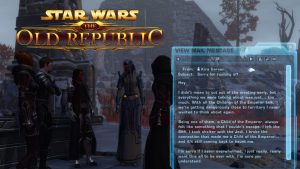 Mails from Digging Deeper
Mails from Digging Deeper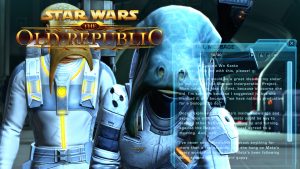 Mails from Manaan
Mails from Manaan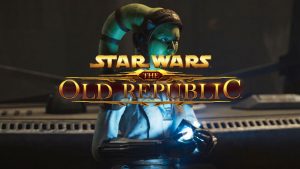 “All That’s Left” Short Story New with 7.1!
“All That’s Left” Short Story New with 7.1! Revan Loungefly Backpack & Loungefly Interview!
Revan Loungefly Backpack & Loungefly Interview! Star Wars: The Old Republic Developer Story and Cinematics Talk Star Wars Celebration 2022
Star Wars: The Old Republic Developer Story and Cinematics Talk Star Wars Celebration 2022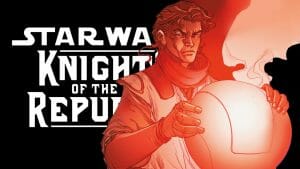 The Rogue Moon Prophecy
The Rogue Moon Prophecy Kaggath Lore
Kaggath Lore
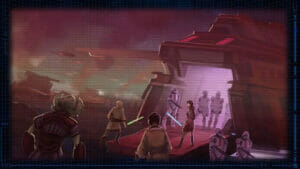
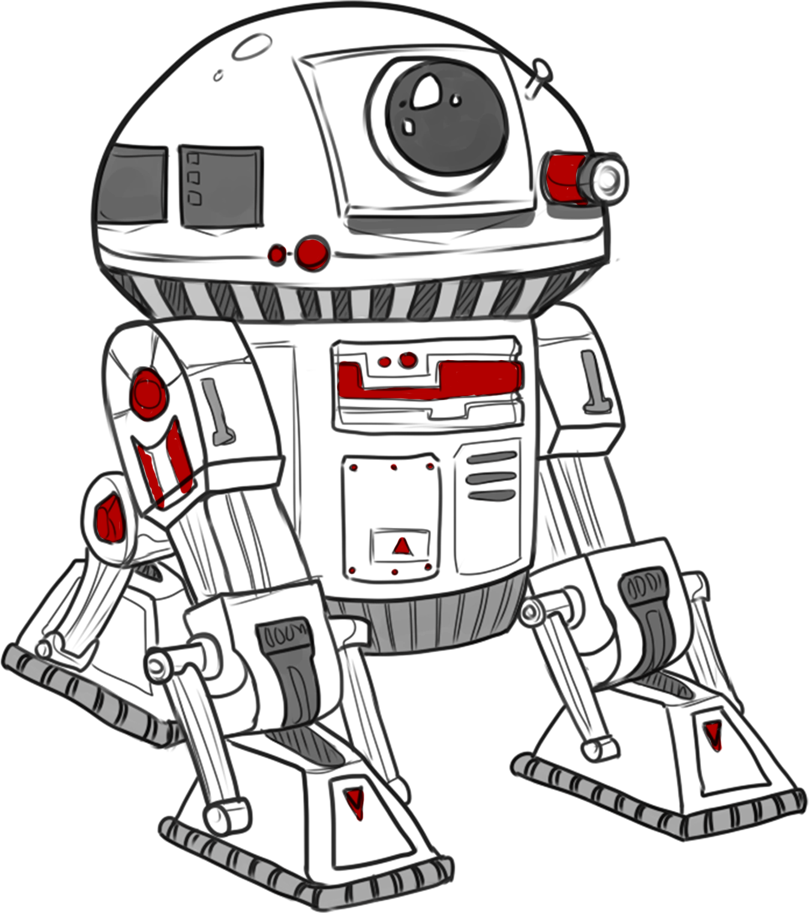
 Twitter @swtorista
Twitter @swtorista Reddit /u/swtorista
Reddit /u/swtorista Discord Swtorista#0153
Discord Swtorista#0153 Email swtorista@gmail.com
Email swtorista@gmail.com Youtube Swtorista
Youtube Swtorista Twitch Swtorista
Twitch Swtorista Patreon
Patreon